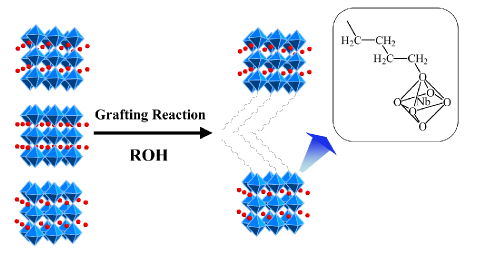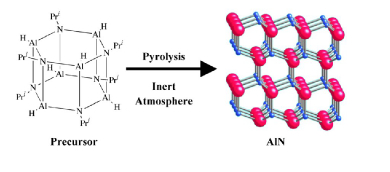 Open Nav
Open Nav
 Open Nav
Open Nav
Our research group is concerned with the development of chemical routes to inorganic-organic hybrids and their use as precursors of ceramic materials. Our research program makes extensive use of inorganic, organometallic, and materials chemistries.
A variety of inorganic-organic hybrids can be prepared by accommodating organic molecules/ions and polymers in the interlayer space of layered compounds, which consist of stacked nanosheets. In particular, we are developing graft-type reactions of layered compounds, such as ion-exchangeable layered perovskites and layered transition metal oxyhalides, to form hybrids with covalent bonds at the interfaces. We thoroughly characterize resulting products investigate reaction mechanisms.
We also develop the preparation methods for incorporation of inorganic nanobuilding blocks, such as nanoparticles and nanosheets, in organic polymers. Surfaces of nanobuilding blocks are organically modified to achieve high dispersibility of the inorganic nanobuilding blocks. We also explore properties of resulting hybrids with respect to their possible applications.
We are developing preparation methods for ceramics from organometallic and metallorganic polymers. We have particular interests in precursor polymers with Al-N or Si-N networks, and we investigate their preparation, conversion processes into ceramic materials, characterization of resulting ceramic materials.
Among preparation methods from precursors with metal-oxygen bonds, the sol-gel process starting from metal alkoxides has been mainly explored. In addition to design of the precursors and reaction conditions at polymerization steps, properties of resulting hybrids are investigated for possible application of these hybrids.

Preparation of hybrids by graft reactions

Preparation of AlN via pyrolysis
B.S. Waseda University (1983); Dr. Engineering, Waseda University (1988); Post-doctoral Fellow, Massachusetts Institute of Technology (1989-1990); Assistant Professor, Waseda University (1990-1992); Associate Professor, Waseda University (1992-2000); Visiting Scientist, Université Montpellier II (1998); Professor, Waseda University (2000-); Invited Professor, Université Montpellier II (2007). Award for Young Clay Scientist, the Clay Science Society of Japan (1989); CSJ Award for Advancement in Ceramic Science and Technology, the Ceramic Society of Japan (2002).